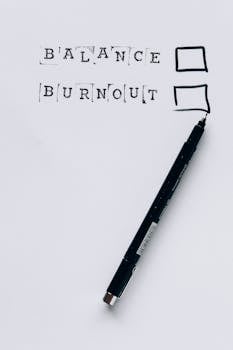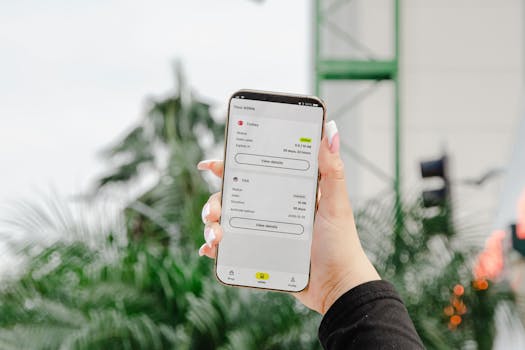Career
Professional email: how to write messages that get responses
Discover practical steps to write a professional email that gets noticed and earns replies. Real examples, checklists, and formatting strategies to improve response rates and workplace connections.
Advertisement
Sending a message and receiving no reply can feel frustrating. Most of us have experienced emails that vanish into thin air. A professional email, when crafted skillfully, stands out and garners actual responses.
Messages delivered with clarity, purpose, and empathy capture attention amid crowded inboxes. These qualities are at the heart of what makes a professional email effective, especially in business and job-related communication.
This article walks you through actionable techniques, real-world examples, and practical checklists to help you write a professional email that reliably gets the responses you need in any work setting.
Craft subject lines that win attention immediately
Every reader can boost reply rates by choosing subject lines that deliver instant clarity. Specific, action-driven subjects tell recipients why opening your email matters.
Instead of vague lines, lead with your core point. For instance: “Q2 Budget Approval Request” is more actionable than “Budget Question.” That’s the foundation of a professional email.
Signal urgency using respectful cues
A professional email avoids sounding frantic but conveys time sensitivity. Use words like “Request by Thursday – Q2 Approval” to nudge attention without overwhelming urgency.
When the need isn’t urgent, say: “Review by end of week appreciated.” You respect workloads while still prompting timely action.
Placing timelines politely reduces frustration later. Staff can prioritize efficiently using this information up front in their inbox triage process.
Match format to the recipient’s context
Some people prefer detailed subjects; managers might want concise cues. Match your email’s formality and complexity to what the reader expects. Adaptation shows professional respect.
For internal chats, brevity is best: “FYI: Budget Meeting Change.” For clients, offer more context: “Follow-up: Budget Update and Next Steps.”
Review older emails from your contact for guidance. Leveraging their language increases your open and reply rates.
| Subject Line Style | Use Case | Tone | Do Next |
|---|---|---|---|
| Action Required: [Topic] | Task assignment | Formal, direct | Summarize needed step in first line of body |
| [Meeting Date] Change | Schedule updates | Brief, neutral | Include new date/time immediately |
| FYI: [Topic] | Information share | Friendly, short | Add one line recap |
| Follow-Up: [Project Name] | Project updates | Professional, ongoing | Summarize status and request input |
| Thanks: [Specific Help] | Appreciation | Upbeat, grateful | State what was helpful |
Lead with purpose in the email opening
Every professional email should start with a quick, clear purpose statement. This shows respect for your reader’s time and increases your odds of a swift reply.
Begin each message by stating what you’re asking or sharing. Avoid small talk unless the relationship calls for it, cutting straight to the reason for your outreach.
Make your intention explicit right away
Use language that lays out your ask, like “I’m writing to request project files by Friday.” The recipient instantly knows what’s expected, lowering confusion and delays.
People appreciate upfront context: “I’m following up after our meeting to confirm next steps.” The difference is like giving a signpost versus leaving someone to guess the direction.
- Open with your main goal stated plainly. Let readers relax knowing exactly what you want at the start.
- Reference any recent event to anchor context. This makes transitions smoother when following up or following through.
- Summarize your request briefly no later than the second sentence to maintain focus.
- Avoid filler phrases and indirect openers, like “I hope this email finds you well,” unless rapport makes it suitable.
- Signpost key details and the action item, so the reader sees exactly what to do without searching through text.
These tactics make your professional email more actionable and efficient.
Connect tone to reader relationship
If addressing a new contact, use a little more formality. For familiar readers, a warm tone keeps things personable but still professional.
Direct language doesn’t mean abrasive. Try:“I’m asking for your update on this report by Wednesday.” Tone drives perception, so always aim for clarity and courtesy together.
- Shift to friendlier wording with team members you know. This fosters openness but don’t lose focus on your purpose.
- Avoid jokes or regional expressions with international contacts. Stick to universal language for clarity and respect.
- Mirror formality cues from previous messages. Maintain professionalism even as relationships develop.
- Never assume the level of personal detail that’s appropriate. Always prioritize your recipient’s comfort first.
- Reserve casual remarks for brief, relevant comments that add rapport, paired with your request.
Balancing professional and approachable language in your email yields both engagement and results.
Structure the message for fast and precise reading
An effective professional email guides the eye. Use clear paragraphs, bullets, and bolded lines to draw action steps or deadlines. This helps recipients process and respond efficiently.
Keep subject, main request, supporting info, and closing separated. That way, skimming leads directly to the necessary action, avoiding information overload.
Break information into bite-size sections
Each topic should get its own paragraph. For example, keep action steps, background, and follow-ups distinct, as if stacking files on a desk for clarity.
Short paragraphs make screen reading less daunting. Most people read on phones or while multitasking, so concise structure prevents errors and missed messages.
A professional email benefits from one-line bullet lists—quick to read, easy to recall later when replying or delegating.
Highlight key action steps visually
Use bullets or numbered lists to enumerate what needs to be done. This way, your recipient can reply point by point without missing any step.
Bolding critical information, such as “Deadline: Friday, May 10,” ensures it’s not missed by a scanning eye. Visual emphasis adds accountability and order.
Examples for action items: “1. Approve attached document, 2. Forward to procurement, 3. Confirm receipt by reply.” Clear formatting is an invisible assistant in every professional email.
Tune your message for response probability
Your reply rate rises when you anticipate the recipient’s barriers. Tailoring your professional email to their schedule, workload, and attention span helps break through distractions.
If timing is tight or the topic is unfamiliar, state why you’re reaching out now and why the response is important. Offer a simple way for them to act.
Empathize with competing priorities
Recognize your recipient’s busy schedule. Say, “I understand you’re closing the quarter, so please let me know if more time works better.” Respect builds goodwill and trust in your professional email exchanges.
Being considerate naturally elevates your chance of response. Use language that alleviates pressure and offers flexible next steps, like, “Reply when convenient, and let me know if you need more details.”
Your patience comes through as professionalism, not indifference or disengagement, making people more eager to help you when possible.
Write with clarity, simplicity, and directness
Clear, simple wording means your professional email lands with precision. Direct language, like “Please approve by Friday,” leaves no room for misinterpretation and streamlines actions.
Wordiness and industry jargon can muddle the message. Trim sentences, preferring common words and straightforward phrasing to help everyone act confidently on your requests.
Avoid jargon and ambiguous terms
Instead of “synergize on project pivots,” write “coordinate on project changes.” The fewer extra steps for the reader to decode, the quicker the response to your professional email.
Analogous to giving directions to a friend, be so direct that they would never take the wrong turn. Clarity invites trust and ensures tasks aren’t delayed by confusion.
When a term is unavoidable, briefly define it the first time you use it so the reader can follow along, regardless of experience level.
Be concise but maintain a warm touch
Cut any words that don’t add substance. For example, “Let me know by noon, please” is friendlier and shorter than, “I’d appreciate it if you would let me know by noon.”
Balance being direct with a courteous finish, like “Thanks in advance for your help.” That single sentence can highlight your appreciation and raise response rates on any professional email.
Short, considerate closings stick in memory and set a positive tone for future correspondence.
Seal your email with strategic closings and calls to action
A professional email ends with a clear, specific next step. Instead of “Let me know what you think,” try “Please confirm your attendance by 3 PM.”
Select closings based on context: “Best regards” is universal, “Thanks” for helpful colleagues, “Sincerely” for formality. Every closing phrase signals your intent and tone.
- Use direct requests for action, like “Please reply with your feedback by Thursday.” This clarifies urgency and deadline.
- Add gratitude, especially if you’re asking for extra effort: “Thank you for your time on this.”
- Offer your contact info for fast follow-up: “If you have questions, call me at [number].”
- State preferences for reply format or channel when relevant, e.g., “A quick reply by email is easiest.”
- Finish with your name, title, and optional LinkedIn or business card link for credibility and ease of connection.
Ending well makes your professional email feel complete, actionable, and respectful.
Recap: transform your email habits for better outcomes
By applying these steps, you can draft a professional email that stands out and gets results. Subject lines, clear intros, and practical formatting make your intent unmistakable.
Precise structure and direct requests, paired with empathy and flexibility, strengthen your reputation for reliability. Every professional email is another opportunity to show you value your connections’ time and attention.
Start practicing these techniques today. Each improvement multiplies your influence at work, making professional email your reliable tool for connection, collaboration, and follow-through.





